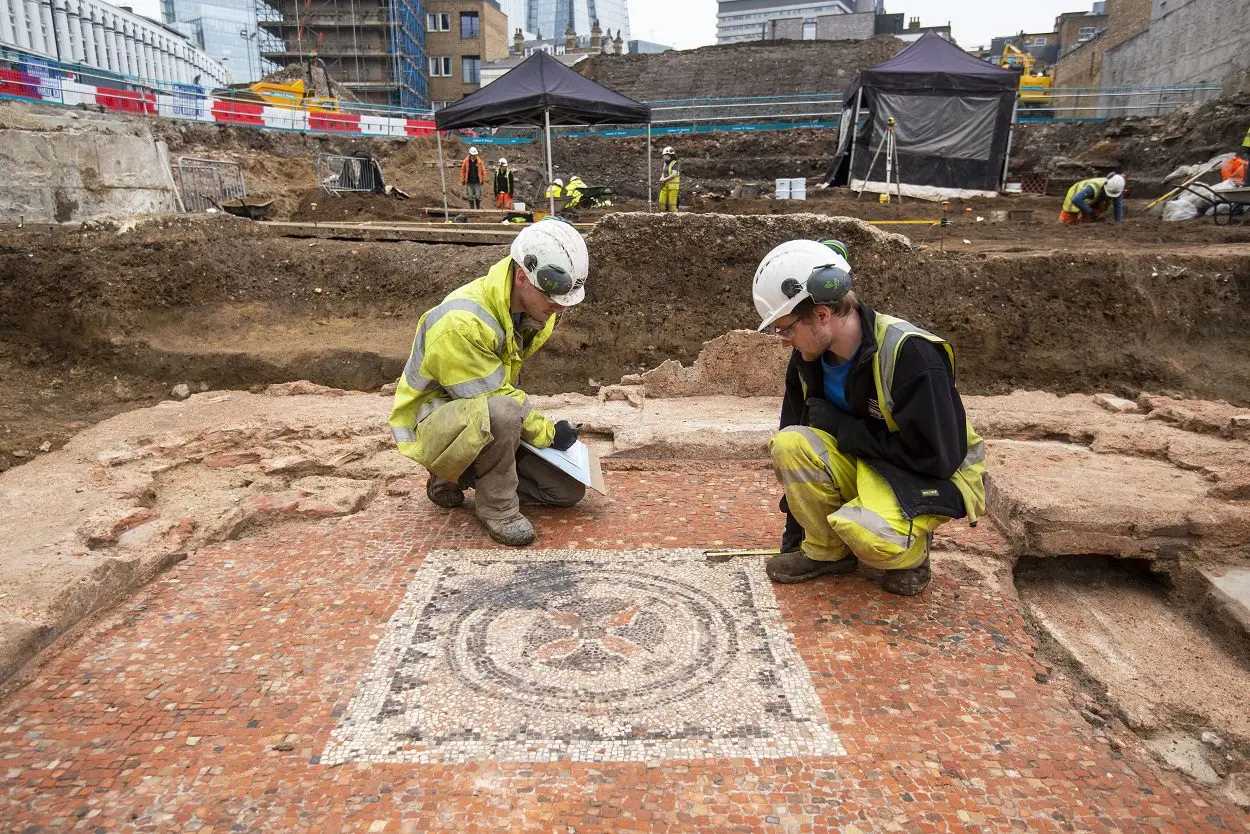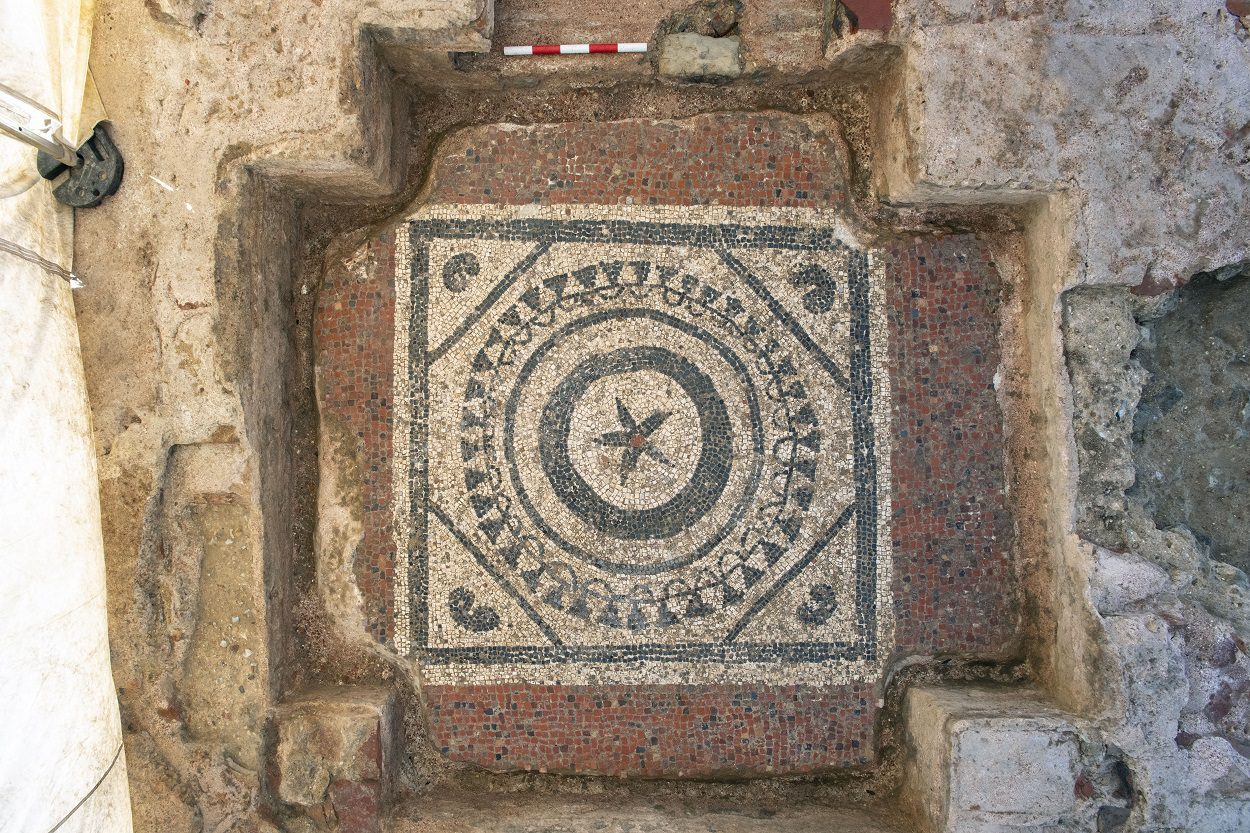A team of archaeologists, led by the Museum of London Archaeology (MOLA), on behalf of Landsec and Transport for London (TfL), have discovered Roman mosaics in London described by experts as “completely unique.”
Archaeologists also unearthed the well-preserved remnants of a mausoleum, a grand tomb structure with intact walls, interior flooring, and a captivating mosaic at its centre. Surrounding the mosaic is a raised platform where the burials were once laid to rest. The extraordinary level of preservation establishes it as the most complete Roman mausoleum ever unearthed in Britain.
The mausoleum underwent significant modifications during its lifetime and archaeologists uncovered a second mosaic directly beneath the first – indicating the floor of the structure was raised during its lifetime. The two mosaics are similar in design, with a central flower surrounded by a pattern of concentric circles set within a pavement formed of small red tiles.
The walls of the structure underwent extensive dismantling, likely occurring during the Medieval Period, with the intention of re purposing the materials elsewhere. Nonetheless, the available evidence strongly suggests that this was originally a substantial edifice consisting of two stories.

Antonietta Lerz, Senior Archaeologist at MOLA, said: “This relatively small site in Southwark is a microcosm for the changing fortunes of Roman London – from the early phase of the site where London expands and the area has lavishly decorated Roman buildings, all the way through to the later Roman period when the settlement shrinks and it becomes a more quiet space where people remember their dead. It provides a fascinating window into the living conditions and lifestyle in this part of the city in the Roman period.”
Londinium is the name given to the Roman city, now occupied by the City of London that contains the historic centre and the primary central business district of London. The site was established in AD 47 (confirmed by a dendrochronological study) around a narrow point on the River Thames that enabled the construction of a bridge crossing, but deep enough to allow seagoing vessels to navigate the tidal river channel.

By the end of the 1st century AD, Londinium had expanded rapidly and quickly became one of the largest cities in Roman Britannia, replacing Camulodunum (Colchester) as the provincial capital.
During the 2nd century AD, Londinium had reached its peak with around 45,000-60,000 inhabitants, covering an area of 330 acres north of the River Thames. The city contained a large forum and basilica (one of the largest in the Roman Empire north of the Alps), several bathhouse complexes and temples, an amphitheater, the Governors Palace (Praetorium), and many townhouses (domus).
Londinium’s status began to decline during the 5th century AD, with many public buildings falling into disrepair and communication with the rest of the Roman Empire beginning to weaken due to the barbarian incursions into Gaul and Hispania.
In addition to the discovery of the mosaics, the mausoleum featured a raised platform constructed from tiles bonded together with a durable and water-resistant pink mortar called opus signinum. This platform served as a delineation for the burial areas, arranged in a parallel fashion along three sides of the structure and aligned with the walls.
The mausoleum’s purpose was likely reserved for affluent individuals within Roman society. It might have served as a family tomb or possibly belonged to a burial association, where members contributed a monthly fee for the privilege of being laid to rest within its confines.
Header Image Credit : MOLA





